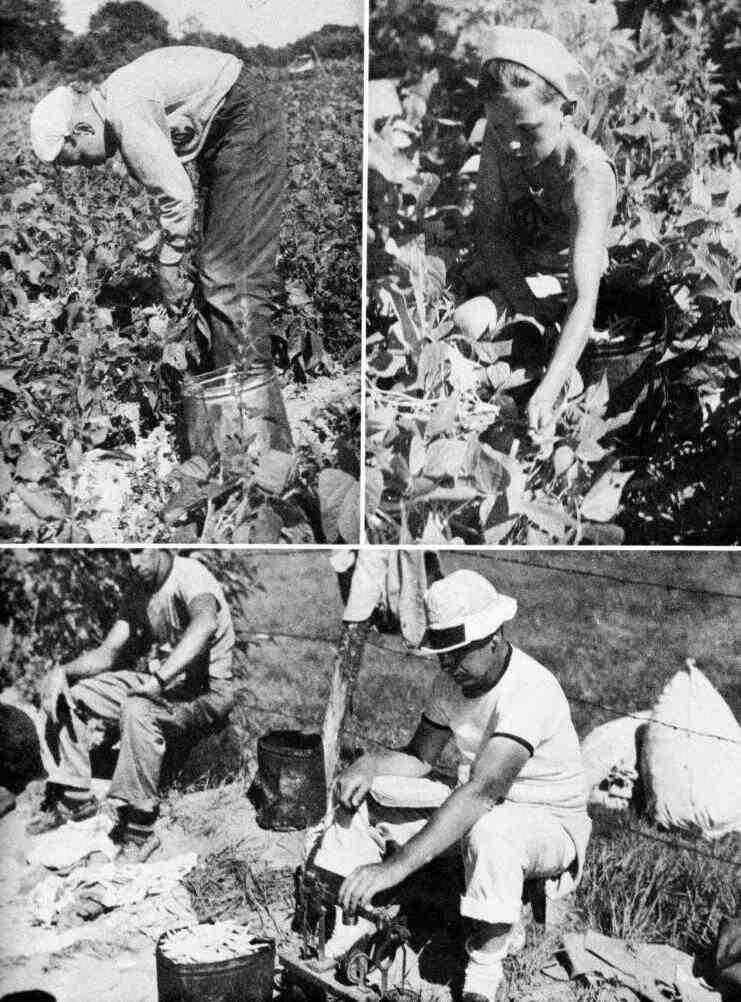
Figure 1.--Here we are doing our bit for the War Effort, picking wax beans. We were given sailor caps and overalls to wear rather than our camp uniforms. |

|
A Camp activity we all loathed was bean picking. I don't think this was not a normal camp activity. It was our little bit for the War effort. America entered the War after Pearl Harbor (December 1941). Farm labour was in short supply during the War. Thus we did our little bit. We used to go enmasse to a local farm and pick wax beans. Bean picking happened about once a week during the harvest - so about three times altogether. Even the Juniors did it. We went in relays I think, probably 30 at a time. Possibly one cabin from each Unit. We
weren't issued with special clothes. The older person wearing the sailor hat is using scales to weigh the can of picked beans. He was a senior councellor. One boy has a handkerchief knotted at the corners as a sun
hat. The other boy has a sailor cap. Some boys wore jeans, as our legs got quite sunburnt. We had no sunblock in those days. I used to wear my camp shorts and top. We were paid slave labour, about a cent a pound. It was back breaking and very hot. If you were good you could pick about half a dollars worth in a session. If it had been strawberries we could have eaten some. None of us fancied raw wax beans.
A Camp activity we all loathed was bean picking. I don't think this was not a normal camp activity. It was our little bit for the War effort. America entered the War after Pearl Harbor (December 1941). Farm labour was in short supply during the War. Thus we did our little bit. We used to go enmasse to a local farm and pick wax beans. Bean picking happened about once a week during the harvest - so about three times altogether. Even the Juniors did it. We went in relays I think, probably 30 at a time. Possibly one cabin from each Unit. We
weren't issued with special clothes. The older person wearing the sailor cap is using scales to weigh the can of picked beans. He was a senior councellor. One boy has a handkerchief knotted at the corners as a sun
hat. The other boy has a sailor cap. We didn't have head gear at camp, and I don't ever remember wearing one my self. None of the photos in the year book shows anyone with a hat, so I think what ever is worn is the wearer's own cap. Looking back it seems rather irresponsible not to give children hats for working in the fields. Some boys wore jeans, as our legs got quite sunburnt. We had no sunblock in those days. I used to wear my camp shorts and top. We were paid slave labour, about a cent a pound. It was back breaking and very hot. If you were good you could pick about half a dollars worth in a session. If it had been strawberries we could have eaten some. None of us fancied raw wax beans. Wax beans are a kind of yellow string bean, very similar in growing habit to French beans. I have not seen them in Europe. They are on my 'not wanted' list of food stuffs!
There was already an ethos to help bring in the harvest. It became a popular activity for college students who weere anxious to do something for the war effort. We younger boys at camp, just knew it was a lot of hard work. The older youths understood it was something of importance.
Later on, in the summers of 1943-44 we were living in Vermont, my foster parents had a farm in Norwich. We used to get harvest labour from Dartmouth College, which by then was a Naval training centre. The recruits loved to voulteer. I loved trampling down the hay in the barn after it was brought in. Farming was very labour intensive then. We had a tractor, but several local farmers didn't. Often the hay was cut by horse and cutter. The hay was left to dry and then raked up and thrown into the hay cart. If the hay was not dry enough there was a danger of spontaneous combustion and the barn would go up in flames. Barn fires were not uncommon.
Navigate the Historic Boys' Clothing Web Site:
[Return to the Main Alan and Graham camp page]
[Return to the Main Alan and Graham evacuation experience page]
[Return to the Main English back garden family page]
[Return to the Main English 1930s personal experience page]
[Return to the Main English personal experience page]
[Return to the Main World War II British evacuation page]
[Return to the Main British World war II overseas evacuatio page]
[Introduction]
[Activities]
[Bibliographies]
[Biographies]
[Chronologies]
[Style Index]
[Contributions]
[Frequently Asked Questions]
[Glossary]
[Images]
[Links]
[Registration]
[Boys' Clothing Home]
Navigate the Historic Boys' Clothing Web chronological pages:
[The 1930s]
[The 1940s]
[The 1950s]
[The 1960s]
[The 1970s]
[The 1980s]
[The 1990s]
Navigate the Historic Boys' Clothing Web style pages:
[School uniform]
[Short pants]
[Scouts]
[Cubs]
[Caps]
[Socks]
[Jeans]
